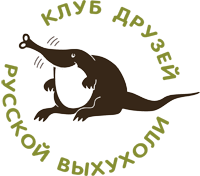Библиотека
 На главную страницу библиотеки
На главную страницу библиотеки
Using relatedness networks to infer contemporary dispersal: Application to the endangered mammal Galemys pyrenaicus
Год: 2017
Авторы: Escoda L., Gonzalez-Esteban J., Gómez A., Castresana J.
Издание: Molecular Ecology. V. 26. No 13. P. 3343-3357.
Information about the degree of contemporary dispersal is important when trying to understand how populations interchange individuals and identify the specific barriers that prevent these movements. In the case of endangered species, this can represent crucial information when designing appropriate conservation strategies. Here we analyze relatedness between individuals from different localities and use these data to infer whether dispersal occurred in recent generations. We applied this approach to the Pyrenean desman (Galemys pyrenaicus), a semiaquatic and endangered species endemic to the Iberian Peninsula. We studied this species in four primary rivers in the Iberian Range, where two ancient mitochondrial lineages are separated by a strict contact zone, suggesting the existence of complex dispersal patterns. Using next generation sequencing, we obtained 912 SNPs from each specimen and estimated relatedness values between them. While relatedness networks were dense within each river, we found surprisingly few relationships between individuals from different rivers despite their close proximity in some cases, indicating much lower dispersal between rivers compared to dispersal within a single river. In agreement with this result, the degree of inbreeding was exceedingly high in most individuals. These data show that relatedness information can be crucial to understand the contemporary dispersal patterns and conservation status of specific populations of endangered species
DOI: 10.1111/mec.14133
Тэги: Conservation Genetics, Mammals, Inbreeding, Relatedness, Dispersal

Ошибка




